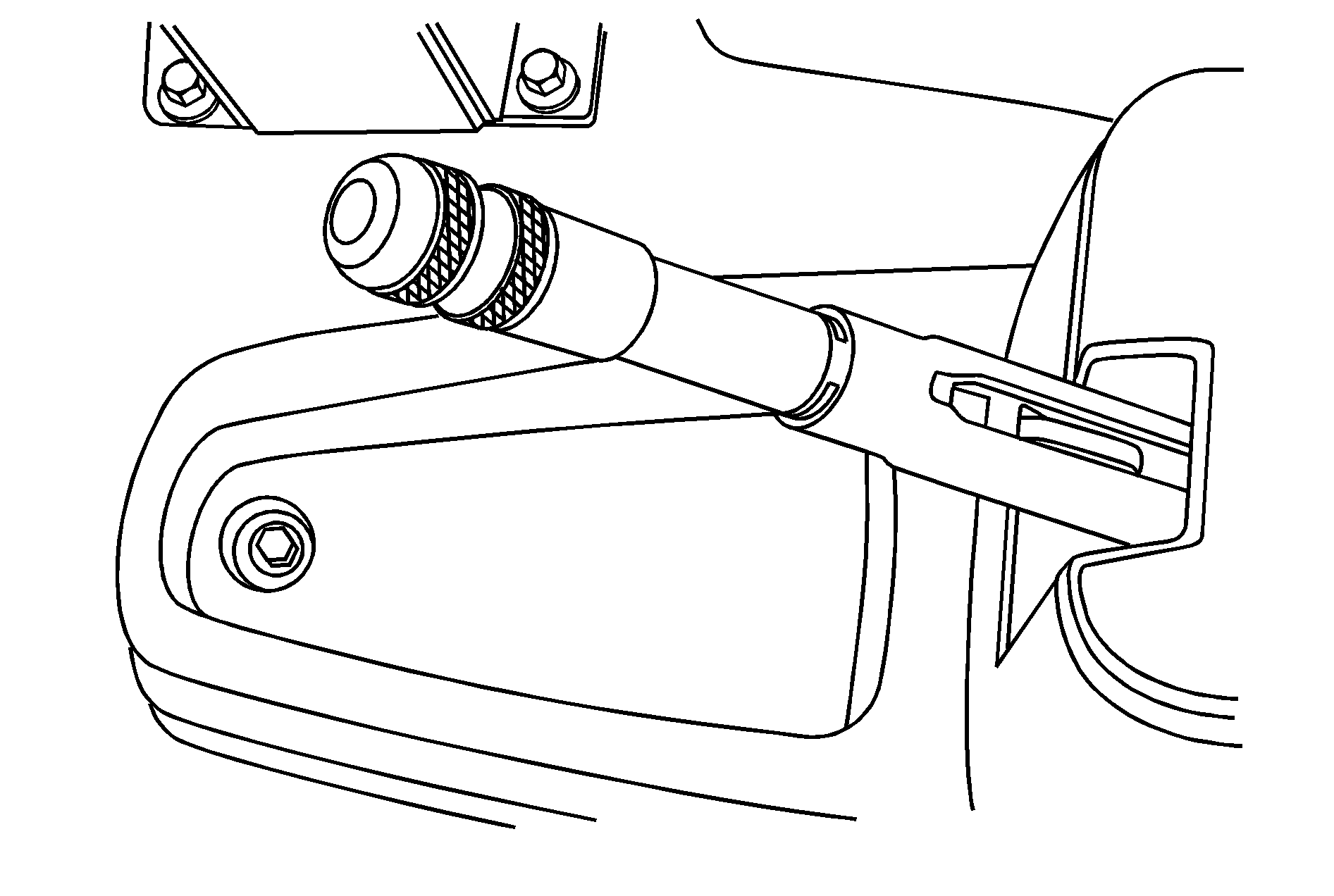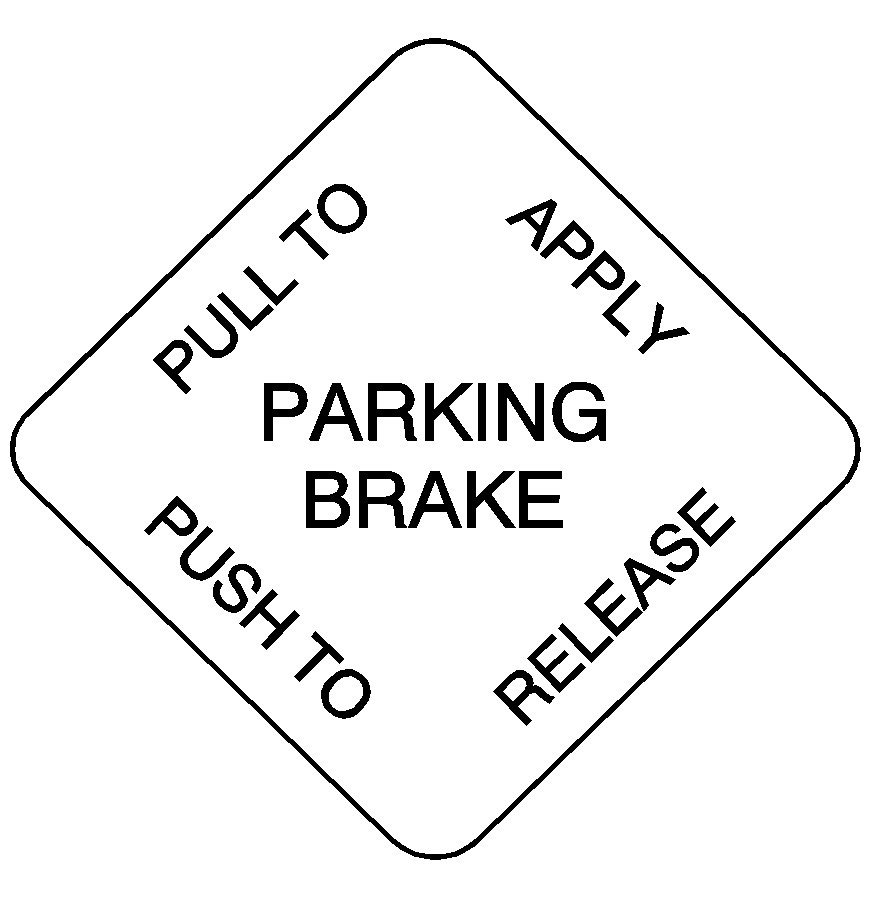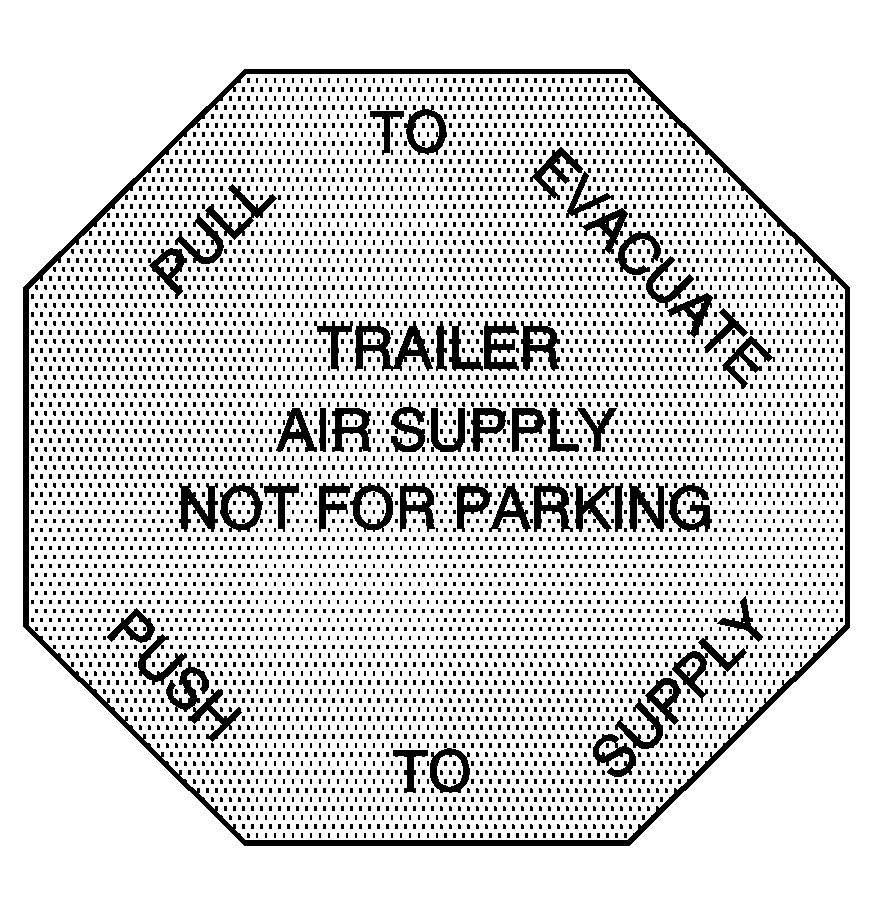Caution: If you do not park the vehicle properly, it can roll. If you have left the engine running, it can move very quickly. You or others could be injured. To be sure the vehicle will not move, even when you are on level ground, follow the steps below.
Two-Speed Rear Axle
- With the engine running, shift the two-speed rear axle into low. To be sure it's in low, you'll need to move the vehicle in gear just a little.
- Hold the regular brake pedal down with your right foot.
- Apply the parking brake.
- Shift the transmission to NEUTRAL or PARK (P).
Hydraulic Brakes
If your vehicle has hydraulic brakes, it has either a parking brake foot pedal or hand lever. If you have the parking brake foot pedal, it is located below the instrument panel to the left of the steering column.

If you have the parking brake hand lever, it is located to the right of the driver, on the floor.

To set the foot pedal parking brake, hold the regular brake pedal down with your right foot. Push down the parking brake pedal with your left foot.
To set the hand lever parking brake, hold the regular brake pedal down with your right foot. Pull up on the handle with your right hand, until it stops.
If the ignition is on when the parking brake is set, the brake system warning light will come on.
To release the foot pedal parking brake, hold the regular brake pedal down. Pull the brake release handle, located just above the parking brake pedal, to release the parking brake.
To release the hand lever parking brake, hold the regular brake pedal down and push down on the handle until it stops.
If the ignition is on when the parking brake is released, the brake system warning light will go off.
Notice: Driving with the parking brake on can overheat the brake system and cause premature wear or damage to brake system parts. Verify that the parking brake is fully released and the brake warning light is off before driving.
Propshaft Park Brake Burnish Procedure
It is recommended that the propshaft-mounted parking brake be burnished as part of the new vehicle break-in. The parking brake will work best after it has been burnished following these instructions:
Make 10 stops, using the parking brake hand lever or foot pedal, from 20 mph (32 km/h) about 2 1/2 miles (4 km) apart. Between stops, drive the vehicle at 20 mph (32 km/h) to allow the brake to cool.
Air Brake
Caution: When the yellow SYSTEM PARK and the red TRAILER AIR SUPPLY knobs are both pushed in, your rig will be free to move. It could strike someone or something. When both of these knobs are pushed in, hold the regular brake pedal down to keep your rig from moving.

If your vehicle has air brakes, you will have this parking brake. It is located above the radio in the instrument panel.
Pulling it out applies the parking brake. The park brake light will come on when the air parking brake is applied.
Vehicles built for use as tractors or towing vehicles have two air brake controls. They look like this:


To charge a trailer's air brake system do the following:
- Move your tractor into the proper position.
- Apply the parking brake by pulling the yellow parking brake knob out.
- Hook up the trailer air system properly.
- Get into the tractor.
- Push and hold down the regular brake pedal.
- Push in both the yellow parking brake and the red trailer air supply knobs. This will charge your trailer's air system.
After a few minutes, the trailer system should be fully charged. When it is, the air pressure gage will show about 125 to 135 psi (862 to 931 kPa).
For driving with a trailer, the yellow and red (if equipped) knobs must be pushed in. It's the same when you're not pulling a trailer except that the red trailer air supply knob must be pulled out.
Caution: If you apply any one of the air brake parking controls while the vehicle is moving, the rig will stop suddenly. If you are not ready for this, you or others could be injured. Do not apply any one of these controls while you are driving, unless you have to make an emergency stop.
If the air pressure drops below 60 to 70 psi (413 to 482 kPa), the primary brake light and warning buzzer will come on. If the air pressure drops to 35 to 45 psi (241 to 310 kPa), the red trailer air supply knob will automatically pop out and apply the spring brakes on the trailer.
If the air pressure drops to 35 to 45 psi (241 to 310 kPa), the yellow park brake knob will automatically pop out and apply the spring brakes on the truck or tractor.
If you ever have a complete loss of air so that your air brakes automatically apply, there is a way that the tow operator can release the parking brakes to tow the vehicle. See Towing Your Vehicle .
Caution: If your vehicle is left in gear, the engine can start if the vehicle starts to roll. This can easily happen if you have the diesel engine. Shift the transmission into NEUTRAL (N) before you leave the vehicle.
